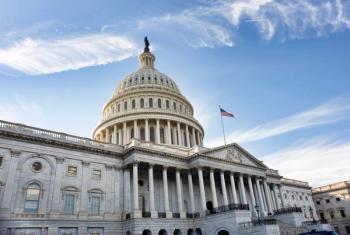
Patient, Doctor Groups React to AHCA Cost Estimate
Almost three weeks after the bill narrowly passed through the House, the bill's CBO score was made public, drawing criticism.
Welcome to Practice Rounds, our weekly column exploring what's being covered in the larger world of healthcare.
Patient, Doctor Groups React to CBO Score
On Wednesday, the Congressional Budget Office (CBO)
The non-partisan CBO projected that if passed into law, over the next decade, the AHCA would reduce the number of insured by 23 million, decrease the deficit by $119 billion, and reduce federal outlays by $1.1 trillion, as well as federal revenue by $992 billion. The national budget deficit savings would come, in part, from an $834 billion Medicaid funding cut.
The score is similar to the score received by the previous version of the AHCA on
American Medical Association (AMA) President Andrew Gurman, MD, said the CBO score shows changes to the AHCA made in late April offered no real improvements. "Millions of Americans will become uninsured - with low-income families on Medicaid being hit the hardest. We urge the Senate to ensure that any changes made to current law do not cause Americans to lose access to affordable, meaningful health insurance coverage, said Gruman in a
Similarly, American Hospital Association (AHA) President and CEO Rick Pollack also issued
The CBO also found that two million fewer people in 2020 and about one million fewer in 2026 would become uninsured under the version of the AHCA that passed the House. Furthermore, one-sixth of the population would reside in states that would alter essential health benefits and change pre-existing condition requirements. In states that shrink or eliminate those requirements, insurance plans are expected to provide narrower coverage.
HHS: Health Insurance Premiums Doubled Since 2013
The Department of Health and Human Services (HHS) released a new
According to the report, average individual market premiums more than doubled from $2,784 per year in 2013 to $5,712 on Healthcare.gov in 2017, an increase of 105 percent. Furthermore, all 39 states using Healthcare.gov experienced an increase in individual market premiums over the past four years, with 62 percent having premiums double what was measured in 2013. In three states, Alaska, Alabama, and Oklahoma, premiums tripled from 2013 to 2017.
"With data that shows average premiums doubling nationwide and Americans paying nearly $3,000 more for health insurance per year, this report is a sobering reminder of why reforming our healthcare system remains a top priority of the Trump Administration," Alleigh Marre, HHS spokeswoman, said in a statement.
Primary Care Salaries on the Rise
The national average primary care salary offered at placement grew from $207,041 in 2015 to $229,734 in 2016, according to the second annual Medicus Firm advanced practice placement compensation summary
The report, released Tuesday by Dallas-based Medicus Firm, a national physician search firm, utilizes placement records, providing data on the average offers being extended, and accepted by primary care physicians nationwide.
According to the report, the national average primary care signing bonus offered increased from $19,714 in 2015, to $27,799 in 2016. Furthermore, the signing bonus in mid-sized communities almost doubled, from $16,875 to $31,967. Signing bonuses were much higher in rural and mid-sized communities than in larger metro areas.
By region, the Midwest region saw the greatest increase in physician compensation, with bonuses in Ohio Valley states growing from $18,063-$35,666, and those in Central US/Upper Midwestern states growing from $24,375 in 2015 to $37,353.
"Primary care has become intensely competitive to the point that hospitals and physician employers are competing with one another on a national scale for physicians, not just regionally or locally," said Jim Stone, president of The Medicus Firm in a
Quote of the week:
"While I take the staff out to lunch, Terence [McCallister], our solo physician, stays back in the office alone at the front desk, answering calls. It not only lets the staff know how appreciated they are, but it reminds the doctor how tough their job is," - Leann DiDomenico McCallister, administrative director at Performance Pediatrics on a unique way to
Newsletter
Optimize your practice with the Physicians Practice newsletter, offering management pearls, leadership tips, and business strategies tailored for practice administrators and physicians of any specialty.











